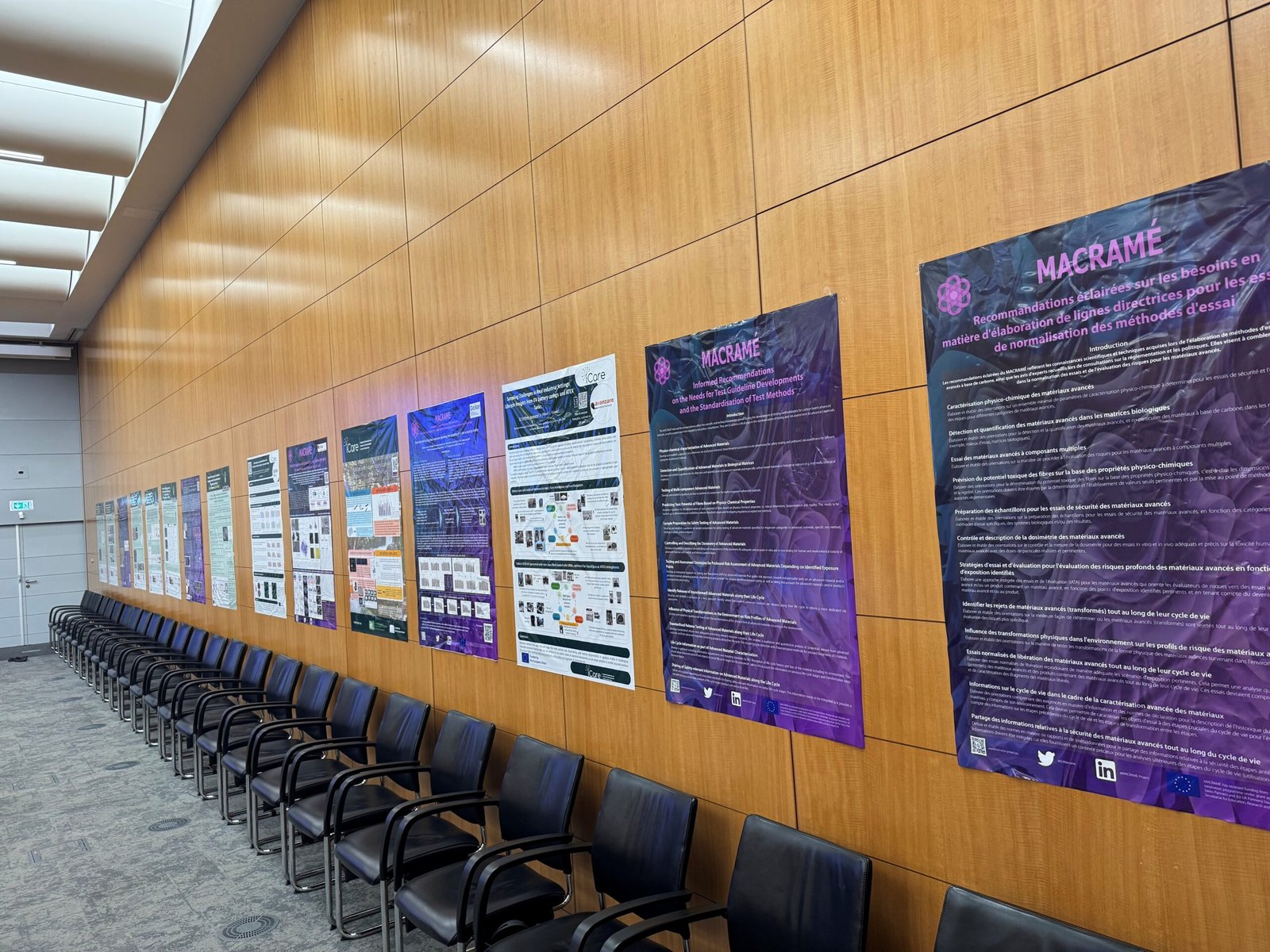RIVM works towards a healthy population in a sustainable, safe and healthy living environment. To that end, we are a trusted advisor to the government, professionals and private citizens. Within the MACRAMÉ project, RIVM contributes to benchmarking and demonstration of cell-line-based in vitro assays for initial screening of inhalable materials. RIVM will broaden its (transregulatory) activities and expertise on nanosafety to include advanced materials (in complex media), thus strengthening its lead of the OECD WPMN.

RIVM and the MACRAMÉ Project
For the governance of advanced materials, RIVM sees challenges in the wide variety of possible compositions, shapes, and sizes, which make a uniform approach difficult. In addition, the development/adaptation of standardised methods to characterise the materials themselves as well as their behaviour and effects lags behind the fast pace of innovations in materials science. Approaches like safe and sustainable by design and Early4AdMa may help identify potential issues early on and minimise the gap between regulatory management of hazards, exposures and risks, and the pace of innovations.
RIVM is co-lead for the WP “Bridging communities & refining strategies” (WP1) in which RIVM will provide, with help from partners in the project, a gap analysis to identify where priorities on risk management may be identified. Based on this work, in the WP “Translation into standards & policy information” (WP5) RIVM aims to identify priorities in test method needs and bring messages on such prioritisations across via workshops, webinars, trainings, and conferences.
In the WP “Development and advancement of characterisation- & test-methods and -protocols” (WP2) RIVM focuses on two topics, i.e. generation of aerosols and cell exposure. Advanced materials, such as fibres and graphene-related 2-dimensional materials, are often not compatible with dispersion in aqueous media. Therefore, novel methods (and thus equipment) are required for generating aerosols that (better) mimic the real-life situation. This contrasts with more traditionally used methods that use deposition of droplets containing previously dispersed nanoparticles. Using novel methods to generate and characterize the aerosols, RIVM will then expose cells via the air (at the air-liquid interface). The previously published co-culture model of Calu-3 bronchial epithelial cells together with macrophages on top (see illustration) will be used.
In the WP “Information & (meta)data harmonisation, processing and sharing” (WP3) RIVM will contribute by working on further formalising the instance maps by adhering to the FAIR principles (I1, I2, and R1.2). This involves mapping the PROV-O ontology to the instance maps and declaring it as a FAIR-enabling resource to be registered in FAIRsharing. The project aims to enhance the provenance information and history, supporting the interoperability of data. This work will also explore the operationalisation of the instance maps and their integration into mainstream use.





